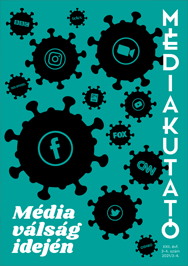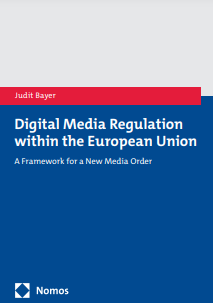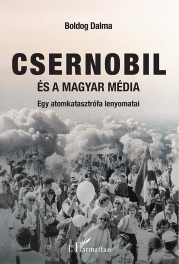Contents – Autumn-Winter 2021
Andok, Mónika:
Andok, Mónika:
Trends in online religious processes during the COVID-19 pandemic in Hungary
The COVID-19 pandemic in 2020, the related closures, and the introduction of social distancing, have both in Hungary and globally transformed people’s everyday lives: work, education, shopping, entertainment, as well as keeping in touch with family and friends. This study shows how Hungarian churches reacted in the spring of 2020 to physical closure and moved to online space. In the churches, two-way work began with special intensity, to organise the online appearance on the one hand, and to work out theological reflections on the possibilities provided by digital technology on the other. This study investigates the questions of what platforms the churches used and what messages they conveyed to their believers and followers during eventand community-based church and religious presence. Patterns of involvement are reviewed in online religious ceremonies from the believers’ viewpoint. In this regard, online data collection was conducted on how believers perceived the experience of social presence, screen-based interactivity and navigation, and the degree of autonomy and personality during digital rites. What did the presence of the camera mean in the process of meaning making, particularly the visual elements and procedures that differed from the visual perception of real presence? Overall, the believers had to deal with a new visual experience, an optical representation of reality, which allowed them to engage in a new type of interactivity and participation.
Keywords: churches on the internet, COVID-19 pandemic, digital religion
Trends in online religious processes during the COVID-19 pandemic in Hungary
Médiakutató Autumn-Winter 2021 pp. 15-23
Rajnai, Richárd – Németh, Szilvia:
Rajnai, Richárd – Németh, Szilvia:
Digital media use in schools – during a pandemic
The toughest recent challenge for the Hungarian public education system was the introduction of online education in March 2020. Pupils, teachers and parents had to leave the school’s usual classroom-based institutional framework without any preparation, and to rethink the whole process of learning/teaching in cyberspace, using the available—and often quite contingent—set of digital tools. Three months of online education offers a large-scale experiment with many lessons on how to reorganise the teaching/learning process in the digital space, how the roles of teachers, parents and students are changing, and how the communication between the actors of public education is changing. This paper, based on an empirical research on the online presence and internet use patterns among children aged 13–17, and using the methodology of the international standard EU Kids Online and Global Kids Online surveys, attempts to explore these issues. It focuses on the new educational/ media use situation created by digital education, and makes an attempt to observe and interpret the everyday practice of online education at the micro level.
Keywords: changes in parental and teacher roles, digital education, distance learning, educational platforms, focus group discussions, teacher/student communication, time spent online
Digital media use in schools – during a pandemic
Médiakutató Autumn-Winter 2021 pp. 25-33
Polyák, Gábor – Nagy, Krisztina:
Polyák, Gábor – Nagy, Krisztina:
The constitutional framework for health communication
Covid-19 also triggered an ‘infodemic’ as the first pandemic of the social media era. Misinformation, disinformation and rumours threaten the management of the health crisis. After describing the infodemic phenomenon, this paper analyses the fundamental rights conflicts between the right to health, freedom of science, and freedom of expression.
Keywords: Covid-19, disinformation, freedom of science, freedom of opinion, infodemia, right to health
The constitutional framework for health communication
Médiakutató Autumn-Winter 2021 pp. 37-45
Bene, Márton – Petrekanics, Márton – Bene, Mátyás:
Bene, Márton – Petrekanics, Márton – Bene, Mátyás:
Who spends how much?
This study looks into Facebook’s political advertising sphere in the contexts of the 2019 European Parliamentary and the municipal election campaigns in Hungary. It focuses on the distribution of advertising expenditure between pro-government and oppositional actors, and in light of the ‘stealth media’ thesis (Kim et al., 2018) it also investigates the question of what type of Facebook pages are active in this advertising platform. Its findings show that there was an opposition dominance in terms of advertising expenditure in both campaigns. Also, the advertising sphere was largely dominated by official political actors, but a few highly partisan media outlets also played an important role. Pages with unidentifiable background, however, were marginal in this sphere, refuting the ‘stealth media’ hypothesis.
Keywords: political advertising, political communication, social media, stealth media
Médiakutató Autumn-Winter 2021 pp. 49-58
Szabó, Lilla Petronella – Béni, Alexandra:
Szabó, Lilla Petronella – Béni, Alexandra:
Virus wars
The Covid-19 pandemic posed a new challenge to the media, which needed to inform citizens about novel concepts such as the spread of the coronavirus, staying at home, or social distancing. Our research focused on how leading Hungarian news sites (24.hu, index.hu, origo.hu) communicated the Covid-19 pandemic and the measures against it during the first and the second waves of the infections in Hungary. We identified the metaphors applied in the news articles by means of the discourse dynamics approach. Metaphors are important because they show the way speakers think about concepts through the analysis of language use. Therefore, metaphors reveal the conceptual frames applied by the online media to coronavirus and the measures against the virus. Our results showed that, in line with the international trend, war metaphors (which depicted the virus as an enemy, against whom one must fight) were dominant in the observed news articles. In addition to the war rhetoric, the spread of coronavirus appeared as a ‘flood,’ and Hungary was depicted as a ‘machine.’
Keywords: coronavirus, conceptual metaphor, discourse-based metaphor identification, Covid-19, flood metaphor, machine metaphor, news portal, war rhetoric
Médiakutató Autumn-Winter 2021 pp. 59-68
N. Varagya, Szilvia:
N. Varagya, Szilvia:
In crisis: communication! Is communication in crisis?
The Covid-19 pandemic, caused by the SARS-CoV-2 coronavirus, reached Slovakia before the campaign period of the parliamentary elections. The intensity of the pandemic coverage by the Hungarian-language daily newspaper Új Szó was influenced by several factors such as the election campaign topics, unexpected election results and other relevant events for the Hungarian enthnic comunity, the new government’s political priorities, scandals and pandemic control measures. The frequency of pandemic thematisation in the daily newspaper followed the curves of each Covid-19 wave in Slovakia. During the studied period, as a result of party-neutral journalism, the pandemic did not become a divisive political issue for Hungarians in Slovakia. The examined contents of Új Szó (editorials, opinion articles, caricatures, op-eds of the above mentioned newspaper) mostly relied on the linguistic and stylistic turns of Slovak political communication, its hidden messages, and the emerging ‘war rhetoric’ concerning the national testing.
Keywords: Covid-19, epidemic communication, media communication, New Word journal, pandemic, political communication, propaganda, public rhetoric, Slovakia, war rhetoric
In crisis: communication! Is communication in crisis?
Médiakutató Autumn-Winter 2021 pp. 69-76
Zakinszky Toma, Viktória:
Zakinszky Toma, Viktória:
“According to press information.”
Migration from the Middle East, North Africa and Asia and the migration crisis got into the focus of media reporting in Central and South-East Europe after the spring of 2015 when the largest wave of migrants arrived into the region, and the topic of migration has remained a major issue in the media all around Europe until to date. It has been more or less intense, politicised, biased, over-simplified or overtly full of disinformation. In most cases, this is explained by pure ignorance, but a deliberate use of lies can also be detected. Sometimes journalists/reporters were unfamiliar with the correct terms and phrases, while sometimes there were no appropriate definitions. Using a comparative method, this paper offers a discourse analysis of Hungarian and Serbian national and regional media. These two countries are both on the ‘West-Balkan route,’ both are transit countries, not destination for migrants. However, they are in different political positions: Hungary being an EU member state, and Serbia wishing to become one. The focus of this research is on the comparative analysis of media discourses between 2016 and 2019 in Hungary and Serbia.
Keywords: asylum seekers, content analysis, crisis, discourse, Hungary, media, migrants, refugees, Serbia, Vojvodina
“According to press information.”
Médiakutató Autumn-Winter 2021 pp. 79-87
Tófalvy, Tamás:
Tófalvy, Tamás:
Is journalism in a permanent crisis?
If one happened to be immersed in the professional and academic discourses on the nature of journalism, they would find that the debate on the assumed crisis of the profession is permanent. In the narratives discussing the potential causes of crisis there are, among other ones, economic, business, political and technological factors. This paper, focusing on the technology-centered narratives, attempts to reconstruct overarching rhetorical themes and framing patterns in crisis narratives, and tries to answer the question of whether it is possible that journalism is in a permanent crisis.
Keywords: crisis, journalism, narratives, professional norms, technology
Is journalism in a permanent crisis?
Médiakutató Autumn-Winter 2021 pp. 91-96
Gödri, Rita:
Gödri, Rita:
Career opportunities for young journalists in Hungary
This research examines the opportunities for beginner journalists in Hungary and seeks to answer the questions of how they can use the knowledge earned at the university, what the expectations of editorial offices are, what employment opportunities they can expect during and after their studies, and how they see their own career opportunities. It is based on nine semi-structured interviews with the junior and senior journalists and editors-in-chief of Átlátszó, Átlátszó Oktatás, Direkt36, and 24.hu.
Keywords: journalism education, professionalism, young journalists
Career opportunities for young journalists in Hungary
Médiakutató Autumn-Winter 2021 pp. 97-106
Dési, János:
Dési, János:
Mercenaries
By the early 1980s, it became evident that the press had gained some freedom – though ‘some freedom’ is not real freedom. The Hungarian Socialist Workers Party still exerted pressure on the media until the end of the decade, but the attitude was more relaxed and the media became more diverse. There were attempts to propagate official policies that were based on apparent lies, but the media in general were less ready to accept these fabrications. Some topics were rigorously banned, others less so, but journalists working in the state media did not need to adhere to orders any more, and the policy of editorial offices became diverse. The general public appreciated efforts to convey the truth. By contrast, after Fidesz came into power in 2010, a new semi-authoritarian regime began to take shape, and a whole new generation of journalists working for the pro-government press is now trained to create upfront deception – and there is nothing to support the view that they would try to change this situation. Tiny scraps of remaining freedom may explain this, because those who are not willing to comply and do not care much about financial gains still have a chance to find a job in the few remaining independent media outlets.
Keywords: censorship, courage, editorial freedom, freedom of the press, independence, party governance, party state, political propaganda
Médiakutató Autumn-Winter 2021 pp. 107-114
Sz. Nagy, Gábor:
Sz. Nagy, Gábor:
Paper crisis as a political weapon in the coalition period (1945–1948)
This paper discusses the paper crisis between 1945 and 1948. It investigates how paper shortage enabled the ruling parties to restrict the publication of certain newspapers. First, it describes the page authorisation mechanism of the era, then it explores the system of paper allocation, and finally it recalls some of its most important findings.
Keywords: coalition period, paper crisis, press policy, supply of paper
Paper crisis as a political weapon in the coalition period (1945–1948)
Médiakutató Autumn-Winter 2021 pp. 117-123
Takács, Róbert:
Takács, Róbert:
Culture, media, and the public sphere in the 1980s during the economic and governance crisis
One of the most frequently used expressions in the 1980s was that of crisis. It occurred 15 times in the first issue of the samizdat periodical Beszélő published in 1981, even though the discourse of official outlets was not dominated by the crisis and reform narrative up until 1986/87. This paper discusses how the public sphere was changing between these two dates, and particularly how the leadership of the party was addressing the growing political and economic crisis.
Keywords: 1980s, commercialisation, change of government, cultural policy, economic crisis, information policy, Kádár era, press control, social deal
Culture, media, and the public sphere in the 1980s during the economic and governance crisis
Médiakutató Autumn-Winter 2021 pp. 125-133
Jele, Ágnes:
Jele, Ágnes:
The symbolic shifting of the borders during the Eurozone crisis: two examples from the German press
Using the conceptual set of the representational direction of postcolonial social science, we can identify some important social consequences of economic-ideological conflicts between the member states of the European Union – in the current analysis a narrower area, the Euro area – such as ethnic and regional stereotyping and economic xenophobia. This paper, using the examples of Das Bild and Der Spiegel, shows how the perception of former central bank governor Mario Draghi has changed depending on whether the president was taking the ‘right’ or ‘wrong’ economic policy steps according to the two press products. Examining the topos of moral superiority and goodness appearing in the press, it presents the operation of these mechanisms based on the concepts of border and exclusion.
Keywords: border, conditional social exclusion, ECB, Euro area, German press, goodness, informal door-closing mechanisms, internal Otherness, Mario Draghi, postcolonialism, representation of otherness
The symbolic shifting of the borders during the Eurozone crisis: two examples from the German press
Médiakutató Autumn-Winter 2021 pp. 137-147
Bódi, Jenő:
Bódi, Jenő:
“From this virus puddle…”
This paper studies the media scandal about the water quality of Lake Balaton in June 2014. After the Hungarian Swimming Day in Balatonfüred, several participating athletes fell ill, including nationally known swimmers. The Hungarian media began to cover the incident vigorously, with several news reports on the diseases and the water quality of Lake Balaton. The research presented here analyses the debate in the media and the emerging social discourse. It identifies four modes of speech, including: lay and expert discourse on water quality and disease; the media policy discourse of local politicians, tourism actors and commenting readers; and the lay discourse on the tourism implications of the scandal.
Keywords: comment analysis, experts and lay people, Lake Balaton, risk, reader comments, scandal, social discourse, water quality
Médiakutató Autumn-Winter 2021 pp. 151-158




